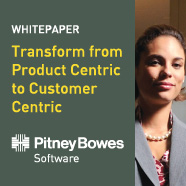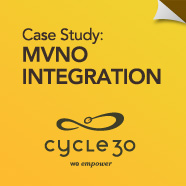Making It "Good"
So how does a CSP ensure that all customer interactions remain positive throughout the entire lifecycle? Ultimately it comes down to this:
- Making every point in the customer lifecycle as issue-free as possible
- Identifying and resolving issues quickly and minimizing disruptions
- Initiating proactive, positive interactions
- Leveraging tools that provide an end-to-end view of the customer's experience and enabling immediate action to ensure positive interactions and satisfied customers
The perfect relationship is one in which the customer never has contact with the service provider, except to upgrade or add on--a positive interaction because it equates to more revenue from a service provider perspective. For a CSP, the key to perfecting its customer interactions is to have an end-to-end view of the customer's experience throughout the entire lifecycle, across the silos, organizations, and processes that currently exist behind the scenes, away from the customer's view. They must have real-time visibility into all the customer's interactions and potential impacts/roadblocks or opportunities that may impact their experience, either positively or negatively.


Beyond Issue Identification
However, visibility alone is not enough; simply seeing the problem is useless if action cannot be taken immediately to right the issue. CSPs must have the ability to address the problem, whatever it may be. Whether this allows them to preemptively resolve the issue before it negatively impacts the customer or to resolve the issues raised by the customer quickly so that expectations are met, actionable visibility is the key to a CSP's success in maintaining a positive customer experience. The challenge in achieving this lies in the fact that behind the "magic curtain" of that united front, there is a complex web of siloed B/OSS environments, organizations, and processes that make it difficult for a CSP to gain that 360-degree actionable end-to-end view of the customer.
Fortunately, today's CSPs are aided by the availability of technology that gives them direct insight into the network and helps them proactively manage and monitor their business processes, allowing them to ensure that every customer interaction is the best it can be. Ripping and replacing existing systems is not a viable option for the majority of providers, but by utilizing business process management (BPM) platforms with existing software systems, managers can easily equip themselves with the real-time visibility they need to monitor, analyze, control and improve the execution of business processes in real-time to enhance their customers' experiences.
Better yet, CSPs can use BPM as a tool to engage in continuous business process improvement driven by an easily adaptable business process view that is decoupled from the underlying systems, allowing for easy changes to meet new customer and business requirements without requiring IT to consume a lot of time and effort. This, combined with a real-time holistic view across all operational areas, allows CSPs to increase operational responsiveness when it comes to network or operational issue resolutions or acting upon a positive opportunity at any touch point throughout the customer's life cycle. This provides the ultimate key to customer experience management and overall customer satisfaction. As the telecom landscape continues to evolve and more and more service options become available, this technology becomes increasingly important for any CSP hoping to stay competitive in today's rapidly changing and increasingly competitive environment.









